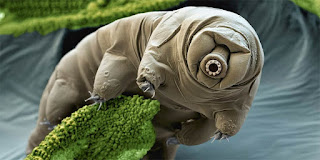You will not believe what I'm about to share with you about these wasps. It's almost on a made for sci-fi level crazy. But it's real.
Let's start with these pictures:
Those are reals photos of a Tarantula Hawk Wasp battling and having killed and dragging a much larger tarantula. Why would it do this? This is where it gets even crazier.
The wasp attacks tarantulas, paralyzing them with its sting, before dragging it off to its den - or sometimes the tarantula's own burrow! The tarantula is paralyzed - not dead - at this time.
Buckle your seat belt:
The tarantula hawk wasp then seals the entry to the burrow/den. But before doing it, it lays a single egg on the paralyzed tarantula. The egg hatches into larva, which starts to eat the paralyzed tarantula alive - focusing on non-essential tissues to keep it alive for as long as possible, perhaps weeks.
I'm not joking.
Luckily, they don't hunt humans. But if they do happen to bite a human, one peer-reviewed journal described it this way:
"There are some vivid descriptions of people getting stung by these things. And their recommendation—and this was actually in a peer-reviewed journal—was to just lie down and start screaming, because few if any people could maintain verbal and physical coordination after getting stung by one of these things. You're likely to just run off and hurt yourself. So just lie down and start yelling."
Mother nature - and the animal kingdom - is fascinating!
Hey! I'm author Kyle Shoop and I've written a fiction novel focused on the amazing world of animals. It's a fantasy/action adventure novel for all ages entitled ACEA AND THE ANIMAL KINGDOM. Check it out on Amazon here (click here).

























